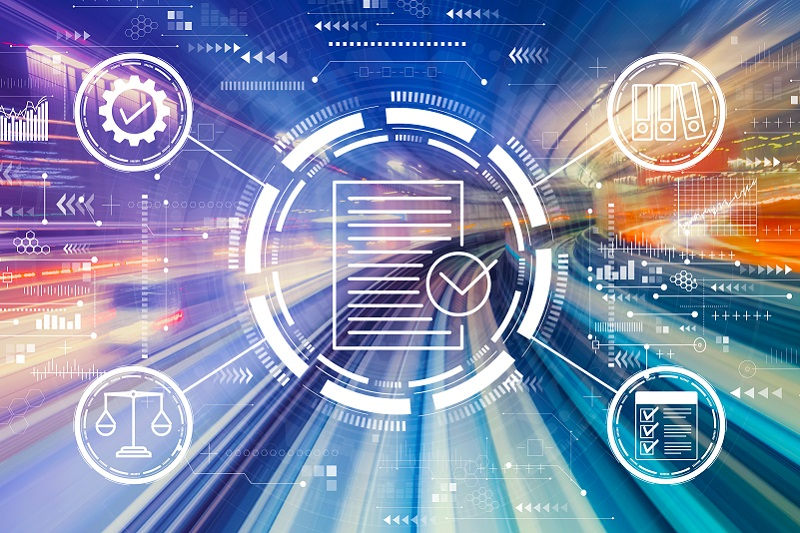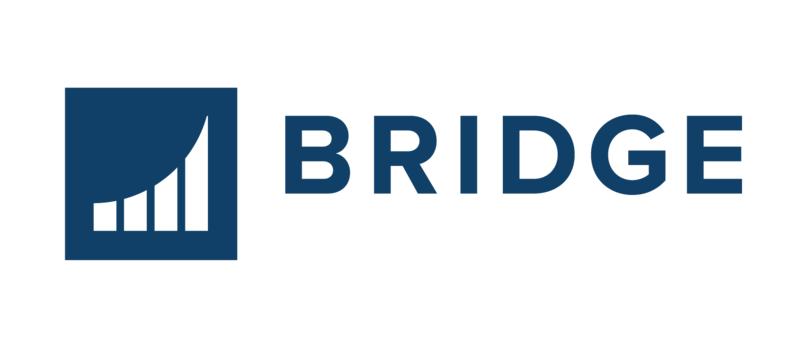ATD Blog
Go Beyond Compliance Training: How an LMS Can Drive a Learning Culture
Wed Feb 28 2024

Uncover the ways a dedicated learning platform can create a culture of engaged learners and enhance your development programs beyond mandatory training.
Every organization requires training to meet regulatory requirements and keep employees up to date with laws and legislation.
For some, it might be tempting to see these once-a-year compliance training needs as checkbox exercises you can handle with a basic tech stack.
However, a dedicated learning management system (LMS) empowers you to address your compliance training needs more efficiently, engage learners with skills development and growth opportunities, and propel your people into an environment of year-round learning opportunities.
Balancing Your Learning and Development Must-Haves With the Nice-to-Haves
In the face of a fast-changing skills landscape, leaders are increasingly looking to nonfinancial people reporting metrics to measure performance. Nearly 30 percent of leaders in one CIPD survey cite compliance and regulatory requirements as the most valuable success metrics. However, while almost half of HR professionals say they feed this information to leaders through training data, less than a third of leaders review this data and use it to inform business decisions.
Although demonstrating compliance to your leaders and regulators is essential, it’s only one part of the bigger picture. Your training and talent management strategies don’t exist in isolation. When your training and development initiatives go beyond tick-box exercises that feed employees the same content, you nurture a culture of learning for your people that translates to a wealth of business-wide benefits.
The learning ecosystem you build combines the technologies and tactics that help people do their jobs well, and finding the right tool to support your L&D culture is a must. A learning platform that combines your strategies is essential in communicating to a developmentally minded organization, engaging your employees with purposeful content, and improving performance.
3 Reasons Why an LMS Is Central to Creating and Communicating a Culture of Learning and Development
An LMS gives you the time and the tools to roll out training programs that add the most value to your learners while taking care of what you need to do.
1) An LMS Helps You Deliver Training That Engages Learners
Effective training programs resonate with your people and help them understand their work’s value and purpose. Whether your mandatory training courses or skills development programs are at stake, if your people aren’t connected with a common purpose or don’t understand how learning relates to their job, convincing them to participate is a challenge.
The Bridge-sponsored HR.com Future of Learning Technologies report shows that when L&D and HR professionals invest in learning technologies, their organizations reap several benefits, including:
Greater employee flexibility in choosing when and where they learn (50 percent)
Improved training for remote employees (41 percent)
Increased employee engagement and satisfaction (29 percent)
Your people are more likely to be motivated when they have access to learning that fits around their workload in multimedia formats optimized for their preferred devices. Designing engaging e-learning content can take your compliance and mandatory training from a dull chore to a fun challenge, and when you use an LMS for administering and distributing content, you’ll feed learners material that’s relevant to them.
2) An LMS Tracks Training and Creates Reliable Reports
The Future of Learning Technologies report also shows that for 53 percent of learning and development professionals, the most notable benefit of using an LMS is access to better tracking and reporting of employee usage, behavior, and knowledge retention.
You’ll need to know that your workforce is compliant, safe, and risk-free, and an LMS like Bridge shows you who’s completed training via a dedicated reporting and analytics dashboard. Access to this data allows you to generate reports and schedule reminders to check on course progression, impending due dates, and knowledge gained from assessments and checkpoints, producing an accurate and reliable audit trail for regulators.
An LMS focusing on learning and development, like Bridge, will help you do more with your reporting and analytics. By integrating skills and performance management data, you can see the impact of your training programs on learner engagement and translate L&D programs into business value.
3) An LMS Improves Productivity and Efficiency
According to a Gartner survey, 47 percent of digital workers struggle to find the information they need to perform their jobs. In addition, 66 percent of respondents believe that their business could achieve better outcomes if they had access to tech that helped them find information and get work done.
The learning library within an LMS serves as a convenient and effective knowledge repository for employees to find, upload, and share this information. Making this content easy for people to find on demand supports a continuous learning culture in which employees can refresh their knowledge and access information when needed.
The people around your business also possess a wealth of knowledge and experience that benefits others, and an LMS promotes collaborative learning by putting that knowledge in front of learners. Giving your subject matter experts a platform to share their insights and create and author their own content within the LMS can free up time for busy L&D teams and enrich the learning experience for your people.
5 Ways an LMS Can Help You Build a Developmentally Minded Culture
To create a culture of development, you need a tool that encompasses your learning, performance, skills, and career development programs and brings them all together.
With Bridge’s LMS, you can handle your mandatory training requirements, driving development without compromising quality, cost, or functionality.
1) Develop Your Managers and Leaders
Although HR and L&D professionals are looking to managers to lead change in their organization, 82 percent of HR leaders don’t feel their managers are equipped with the needed skills. As a result, 60 percent plan to increase investment in manager and leader development programs in 2024.
Your managers are at the forefront of communicating your strategies to learners and supporting their performance and growth. Investing in an LMS that prioritizes conversation and makes performance goals transparent gives managers the tools they need to develop their teams.
Access to your employees’ goals, learning progress, and skills feedback within Bridge shows your people managers the whole picture in a single dashboard, positioning them to help employees overcome any roadblocks, ensure people are on track with training, and guide development conversations. For example, managers can schedule one-on-ones for key moments to observe employee training progress and discuss skills feedback.
Bridge’s LMS also supports your managers and employees in engaging in effective conversations, helping them to build their coaching skills with customizable one-on-one prompts and developmentally minded conversations using the Bridge Career Drivers card game.
2) Build Comprehensive Onboarding Programs to Prepare Your New Hires
Using Bridge’s LMS, you can create and administer personalized employee onboarding programs that feed your new hires relevant company information at the right moments while keeping the training appropriate to their department and role.
Customized and automated learning journeys take your employees through the onboarding process, sharing organization, department, and role-specific knowledge and giving them opportunities to put it into practice. During these first weeks of onboarding, you can also break down mandatory training requirements into small, manageable steps to keep your new employees from becoming overwhelmed as they become familiar with their role.
As the first touchpoint most will have with your organization, your onboarding program sets the tone for the employee experience. You should inject these learning paths with your company culture, share your mission and values, and create moments of connection with peers and managers through one-on-ones and checkpoints at key moments.
3) Reinforce Skills and Behaviors Through Practical Application
Preparing your workforce with up-to-date knowledge and skills is essential for running a proficient, risk-free environment. Beyond keeping up with a fast-changing regulatory landscape, a commitment to ongoing skills development gives your organization a competitive advantage.
You’ll already know that course completion isn’t the end of the learning experience, and you’ll want to know that you’re adding value to your people and reinforcing their skills, leading to long-term performance and behavior improvements.
To do this, you need a system capable of layering in-depth development data to see how learners use their skills. Bridge’s upskilling platform connects employees to training opportunities that develop in-demand industry-specific skills. Your learners can find and enroll in courses that match their career goals and seek out mentors and peers to help them grow with personalized learning and actionable feedback.
In support of your compliance training efforts, skills communities and on-the-job training can give your people context and show them how to spot risks and respond appropriately. After adopting Bridge’s LMS, one customer, Adult and Teen Challenge, created L&D programs resulting in 100 percent compliance completion rates.
4) Personalize Your Learning and Development Programs
Employees will be inspired and motivated to learn when you create a culture of development and give them opportunities to improve and grow. Their learning becomes more relevant with a set of measurable business objectives.
By aligning your employees’ development goals with wider business strategies, your people will see the value and purpose in their work. Employees should have the opportunity to discuss development and career growth opportunities and regularly feed into a personalized career development plan.
Identifying these development goals allows you to create a customized learning experience for your employees and track competencies and goals within your LMS. You can also offer your employees a personalized learning experience within their learning library to close skills gaps or refresh their knowledge.
Bridge’s LMS also automates the process of assigning training programs to groups of learners based on categories such as department and role, so you can make sure they’re always up to speed with the most relevant industry regulations and they have access to courses that align with their goals.
One of the UK’s biggest fast food chains is using Bridge to scale training and monitor compliance levels using Bridge analytics. As a result, they’re completing 100 percent of their mandatory compliance training courses.
5) Conduct Performance Reviews That Give Context to Your Learning
Tying together learning and performance is a powerful way to build a culture of development and bring the human element into your processes through ongoing conversation, goal tracking and alignment, and positive feedback.
When your performance and talent reviews are customizable and built around your people, your employees are always aware of what they need to know and where to improve.
By integrating your performance management data within the LMS, you can combine your learning observations with business objectives for real-time insights. This shows you the areas of your organization where training is making the biggest difference and allows you to proactively monitor the impact of your compliance training outcomes through such metrics as health and safety and customer satisfaction.

